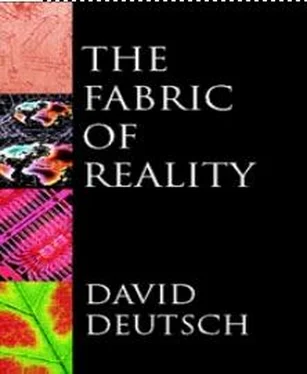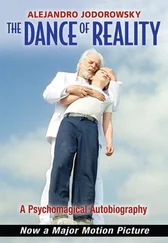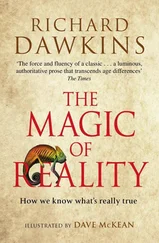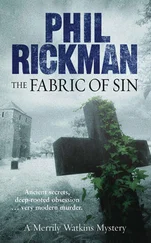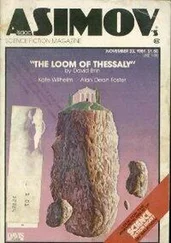David Deutch - The Fabric of Reality
Здесь есть возможность читать онлайн «David Deutch - The Fabric of Reality» весь текст электронной книги совершенно бесплатно (целиком полную версию без сокращений). В некоторых случаях можно слушать аудио, скачать через торрент в формате fb2 и присутствует краткое содержание. ISBN: , Жанр: Физика, Философия, на английском языке. Описание произведения, (предисловие) а так же отзывы посетителей доступны на портале библиотеки ЛибКат.
- Название:The Fabric of Reality
- Автор:
- Жанр:
- Год:неизвестен
- ISBN:0-7139-9061-9
- Рейтинг книги:4 / 5. Голосов: 2
-
Избранное:Добавить в избранное
- Отзывы:
-
Ваша оценка:
- 80
- 1
- 2
- 3
- 4
- 5
The Fabric of Reality: краткое содержание, описание и аннотация
Предлагаем к чтению аннотацию, описание, краткое содержание или предисловие (зависит от того, что написал сам автор книги «The Fabric of Reality»). Если вы не нашли необходимую информацию о книге — напишите в комментариях, мы постараемся отыскать её.
The Fabric of Reality — читать онлайн бесплатно полную книгу (весь текст) целиком
Ниже представлен текст книги, разбитый по страницам. Система сохранения места последней прочитанной страницы, позволяет с удобством читать онлайн бесплатно книгу «The Fabric of Reality», без необходимости каждый раз заново искать на чём Вы остановились. Поставьте закладку, и сможете в любой момент перейти на страницу, на которой закончили чтение.
Интервал:
Закладка:
It seems to me that this question, and therefore the whole prevailing tone of the debate on this issue, is wrong-headed. Admittedly, it is right and proper for theoretical physicists such as myself to devote a great deal of effort to trying to understand the formal structure of quantum theory, but not at the expense of losing sight of our primary objective, which is to understand reality. Even if the predictions of quantum theory could, somehow, be made without referring to more than one universe, individual photons would still cast shadows in the way I have described. Without knowing anything of quantum theory, one can see that those shadows could not be the result of any single history of the photon as it travels from the torch to the observer’s eye. They are incompatible with any explanation in terms of only the photons that we see. Or in terms of only the barrier that we see. Or in terms of only the universe that we see. Therefore, if the best theory available to physics did not refer to parallel universes, it would merely mean that we needed a better theory, one that did refer to parallel universes, in order to explain what we see.
So, does accepting the predictions of quantum theory force us to accept the existence of parallel universes? Not in itself. We can always reinterpret any theory along instrumentalist lines so that it does not force us to accept anything about reality. But that is beside the point. As I have just said, we do not need deep theories to tell us that parallel universes exist — single-particle interference phenomena tell us that. What we need deep theories for is to explain and predict such phenomena: to tell us what the other universes are like, what laws they obey, how they affect one another, and how all this fits in with the theoretical foundations of other subjects. That is what quantum theory does. The quantum theory of parallel universes is not the problem, it is the solution. It is not some troublesome, optional interpretation emerging from arcane theoretical considerations. It is the explanation — the only one that is tenable — of a remarkable and counter-intuitive reality.
So far, I have been using temporary terminology which suggests that one of the many parallel universes differs from the others by being ‘tangible’. It is time to sever that last link with the classical, single-universe conception of reality. Let us go back to our frog. We have seen that the story of the frog that stares at the distant torch for days at a time, waiting for the flicker that comes on average once a day, is not the whole story, because there must also be shadow frogs, in shadow universes that co-exist with the tangible one, also waiting for photons. Suppose that our frog is trained to jump when it sees a flicker. At the beginning of the experiment, the tangible frog will have a large set of shadow counterparts, all initially alike. But shortly afterwards they will no longer all be alike. Any particular one of them is unlikely to see a photon immediately. But what is a rare event in any one universe is a common event in the multiverse as a whole. At any instant, somewhere in the multiverse, there are a few universes in which one of the photons is currently striking the retina of the frog in that universe. And that frog jumps.
Why exactly does it jump? Because within its universe it obeys the same laws of physics as tangible frogs do, and its shadow retina has been struck by a shadow photon belonging to that universe. One of the light-sensitive shadow molecules in that shadow retina has responded by undergoing complex chemical changes, to which the shadow frog’s optic nerve has in turn responded. It has transmitted a message to the shadow frog’s brain, and the frog has consequently experienced the sensation of seeing a flicker.
Or should I say ‘the shadow sensation of seeing a flicker’? Surely not. If ‘shadow’ observers, be they frogs or people, are real, then their sensations must be real too. When they observe what we might call a shadow object, they observe that it is tangible. They observe this by the same means, and according to the same definition, as we apply when we say that the universe we observe is ‘tangible’. Tangibility is relative to a given observer. So objectively there are not two kinds of photon, tangible and shadow, nor two kinds of frog, nor two kinds of universe, one tangible and the rest shadow. There is nothing in the description I have given of the formation of shadows, or any of the related phenomena, that distinguishes between the ‘tangible’ and the ‘shadow’ objects, apart from the mere assertion that one of the copies is ‘tangible’. When I introduced tangible and shadow photons I apparently distinguished them by saying that we can see the former, but not the latter. But who are ‘we’? While I was writing that, hosts of shadow Davids were writing it too. They too drew a distinction between tangible and shadow photons; but the photons they called ‘shadow’ include the ones I called ‘tangible’, and the photons they called ‘tangible’ are among those I called ‘shadow’.
Not only do none of the copies of an object have any privileged position in the explanation of shadows that I have just outlined, neither do they have a privileged position in the full mathematical explanation provided by quantum theory. I may feel subjectively that I am distinguished among the copies as the ‘tangible’ one, because I can directly perceive myself and not the others, but I must come to terms with the fact that all the others feel the same about themselves.
Many of those Davids are at this moment writing these very words. Some are putting it better. Others have gone for a cup of tea.
photonA particle of light.
tangible/shadowFor the purposes of exposition in this chapter only, I called particles in this universe tangible, and particles in other universes shadow particles.
multiverseThe whole of physical reality. It contains many parallel universes.
parallel universesThey are ‘parallel’ in the sense that within each universe particles interact with each other just as they do in the tangible universe, but each universe affects the others only weakly, through interference phenomena.
quantum theoryThe theory of the physics of the multiverse.
quantizationThe property of having a discrete (rather than continuous) set of possible values. Quantum theory gets its name from its assertion that all measurable quantities are quantized. However, the most significant quantum effect is not quantization but interference.
interferenceThe effect of a particle in one universe on its counterpart in another. Photon interference can cause shadows to be much more complicated than mere silhouettes of the obstacles causing them.
In interference experiments there can be places in a shadow-pattern that go dark when new openings are made in the barrier casting the shadow. This remains true even when the experiment is performed with individual particles. A chain of reasoning based on this fact rules out the possibility that the universe we see around us constitutes the whole of reality. In fact the whole of physical reality, the multiverse, contains vast numbers of parallel universes.
Quantum physics is one of the four main strands of explanation. The next strand is epistemology, the theory of knowledge.
3
Problem-solving
I do not know which is stranger — the behaviour of shadows itself, or the fact that contemplating a few patterns of light and shadow can force us to revise so radically our conception of the structure of reality. The argument I have outlined in the previous chapter is, notwithstanding its controversial conclusion, a typical piece of scientific reasoning. It is worth reflecting on the character of this reasoning, which is itself a natural phenomenon at least as surprising and full of ramifications as the physics of shadows.
Читать дальшеИнтервал:
Закладка:
Похожие книги на «The Fabric of Reality»
Представляем Вашему вниманию похожие книги на «The Fabric of Reality» списком для выбора. Мы отобрали схожую по названию и смыслу литературу в надежде предоставить читателям больше вариантов отыскать новые, интересные, ещё непрочитанные произведения.
Обсуждение, отзывы о книге «The Fabric of Reality» и просто собственные мнения читателей. Оставьте ваши комментарии, напишите, что Вы думаете о произведении, его смысле или главных героях. Укажите что конкретно понравилось, а что нет, и почему Вы так считаете.
